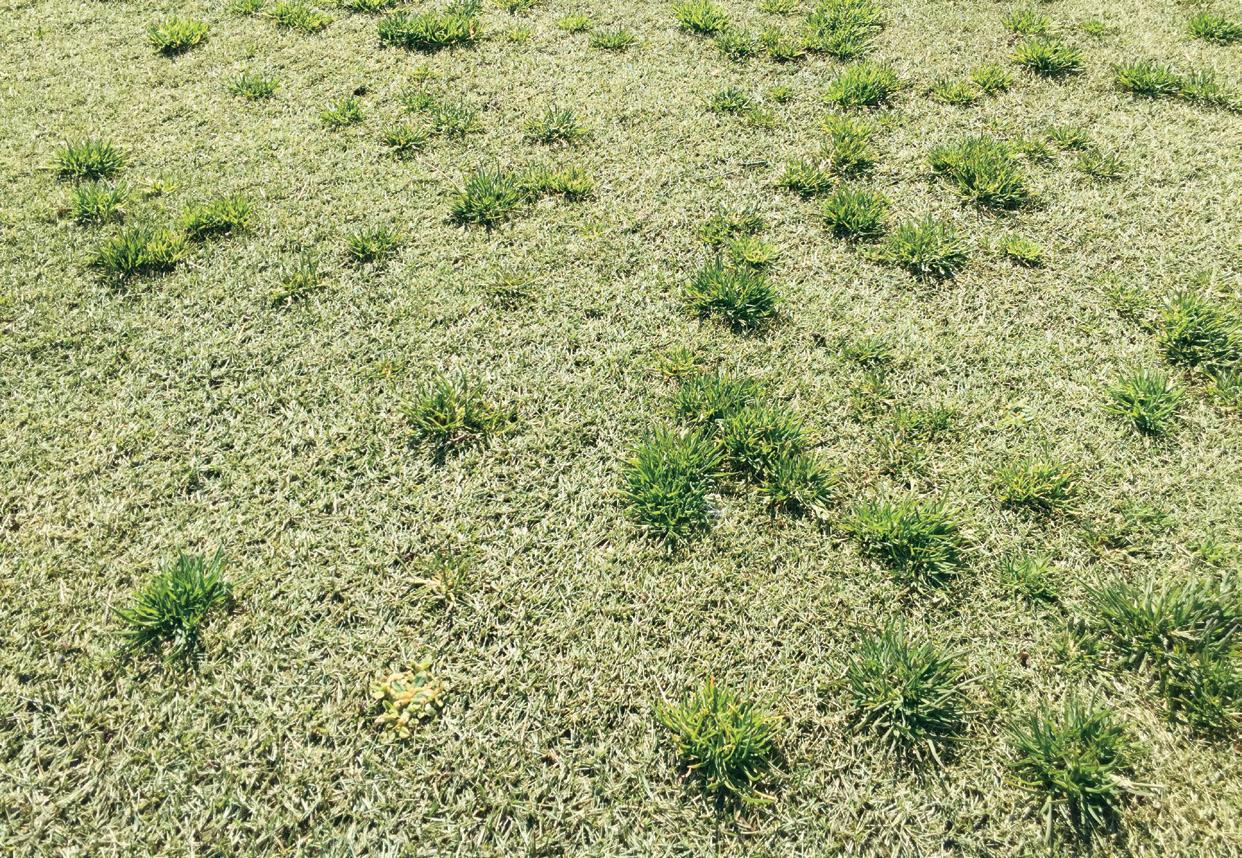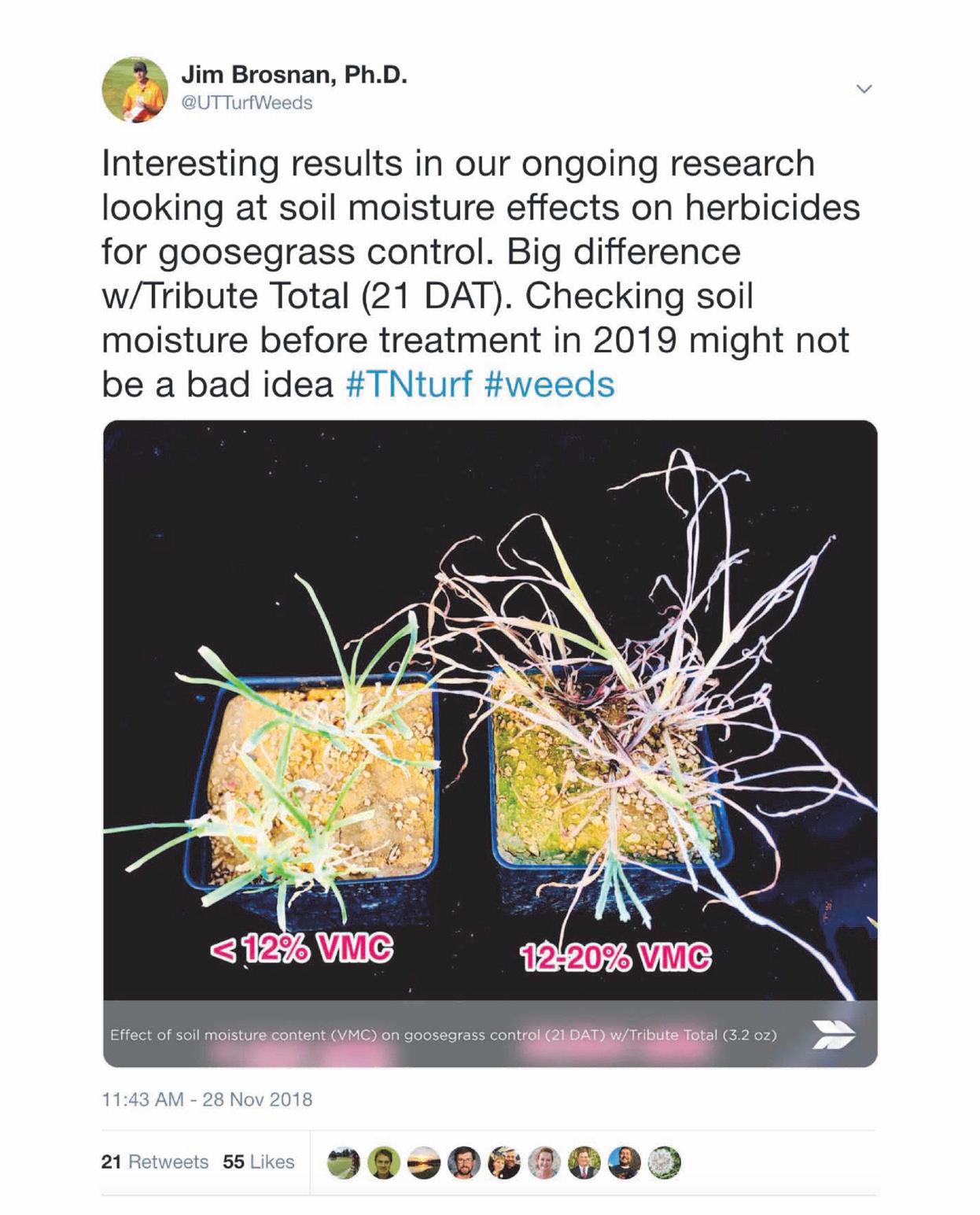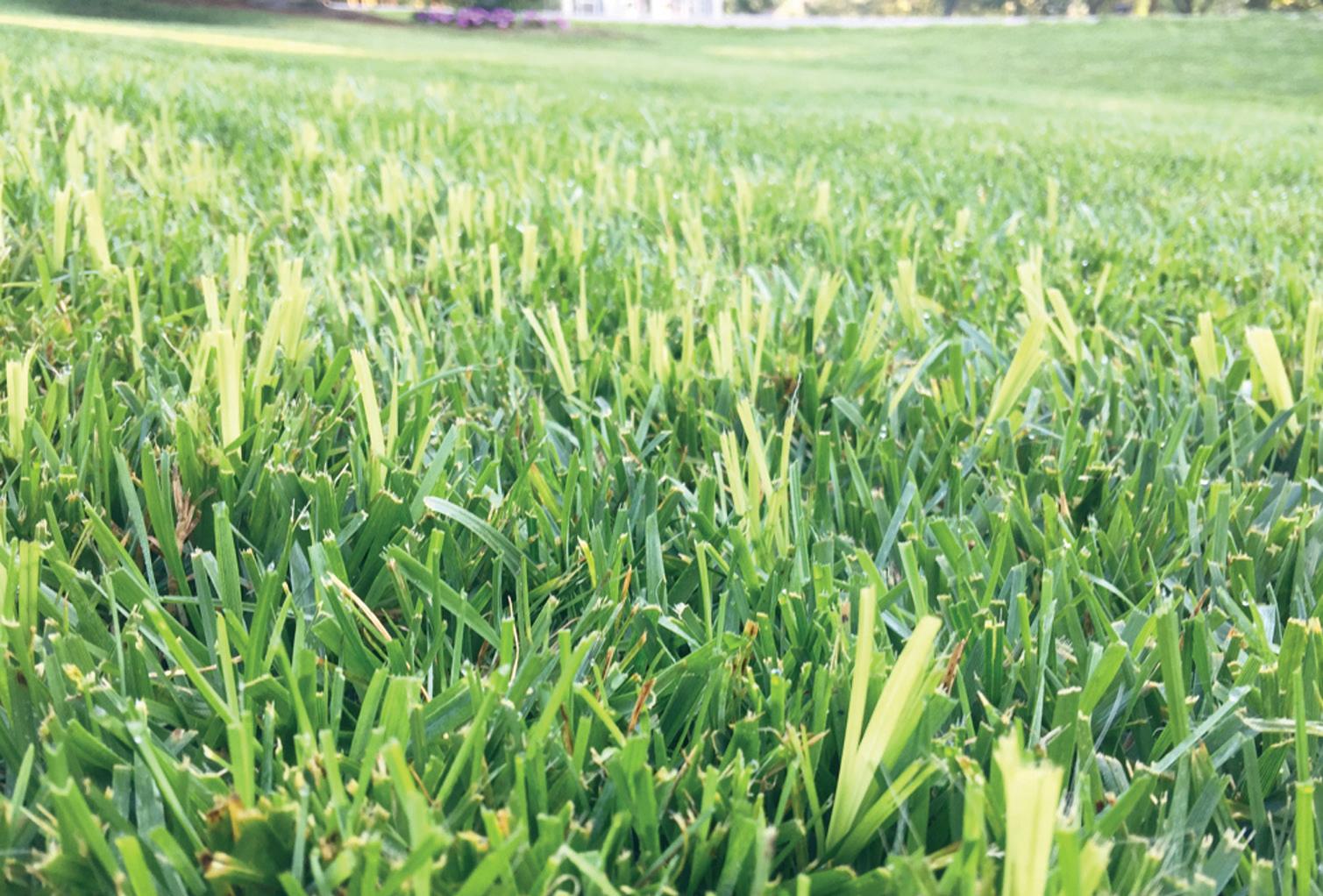
6 minute read
Weed Control Lessons Learned in 2018
By Jim Brosnan, Ph.D., Greg Breeden, and José J. Vargas, University of Tennessee
Each year the turfgrass weed science program at the University of Tennessee conducts hundreds of research trials in the field, greenhouse, and laboratory. Despite having an array of different objectives, all of these trials have a singular focus: to help turfgrass managers with weed management issues. The article below outlines key lessons learned in our program last year that will hopefully be of use to turfgrass managers in the coming season.
Advertisement
Lesson #1 – Explore Weather Data
Mother nature certainly threw turfgrass managers across Tennessee many curveballs in 2018. The year began with air temperatures measuring much higher than historical averages leading to spring emergence of warm-season turfgrasses (and weeds) occurring earlier than normal. Air temperatures fell in April, measuring nearly 10 degrees cooler (on average) than April 2017. Warming in 2018 (as measured by growing degree day accumulation) was higher than the previous two seasons and this period of warming continued into the fall. A detailed breakdown of erratic weather across Tennessee in 2018 is available at: https://medium.com/@UTTurfWeeds/several-curveballsfrom-mother-nature-in-2018-d487c9b2015d.
Irregular weather patterns will not only affect the severity of weed infestations in warm- and cool-season turfgrasses but the efficacy of several herbicide treatments as well. That said, University of Tennessee Extension is here to help. Should turfgrass managers encounter oddities during the 2019 season, they are highly encouraged to contact the University of Tennessee for a breakdown of climatic conditions that may help explain the situation.
Lesson #2 – Know Your Poa
One of the biggest lessons learned last year is that Poa annua, or common bluegrass, populations across the state of Tennessee are very different from one another. Thanks to support from the Golf Course Superintendents Association of America (GCSAA) and Tennessee Chapter of GCSAA, our team is currently conducting a survey of Poa annua across the state. Efforts have allowed us to study 72 different populations randomly selected during spring 2018 from golf courses in East, Middle and West Tennessee that had either bermudagrass (Cynodon spp.) or zoysiagrass (Zoysia spp.) as a primary turfgrass species. Things we’ve learned studying these populations include:

Lesson #2
• Poa annua from West Tennessee takes longer to germinate from seed than that found in Middle or East Tennessee. Moreover, populations from West Tennessee grow less vigorously from seed as well.
• Over 64% of the Poa annua collected in this survey has some level of resistance to glyphosate (e.g., Roundup)
• Over 58% of the Poa annua collected in this survey has some level of resistance to prodiamine (e.g., Barricade)
While we are still continuing to study these populations, implications of this research to turfgrass managers across Tennessee are significant, particularly in regards to herbicide selection. The current recommendation from University of Tennessee Extension is to target Poa annua infestations of warm-season turfgrass with a mixture of pre- and postemergence herbicides in October. This approach is an optimal resistance management strategy in that it facilitates using multiple modes of action for control. Additionally, delaying treatment until October increases the likelihood of turf remaining devoid of Poa annua throughout spring, compared to making a single application of a preemergence herbicide in late August or early September.
Lesson #3 – Soil Moisture Affects Goosegrass Control
Postemergence goosegrass (Eleusine indica) control is a challenge every season. In 2018, we learned that the growing environment in which goosegrass is commonly found could be a reason why herbicide applications often struggle. We evaluated several different herbicides for postemergence goosegrass control in the greenhouse including Speedzone, Acclaim Extra, Tribute Total, Pylex, and Revolver. These treatments were applied to multitiller goosegrass maintained in soils varying in volumetric moisture content (VMC) from <12% to >20%. When applied at maximum labeled rates to plants growing in soils measuring <12% VMC, none of the herbicides tested controlled goosegrass greater than 25%. When soil moisture increased, goosegrass control increased dramatically as well. For example, Tribute Total only controlled goosegrass 20% when applied to plants growing in soil measuring <12% VMC compared to 93% when applied to plants growing in soil measuring >20% VMC.

Lesson #3
To that end, we are recommending that turfgrass managers measure soil moisture content before making postemergence herbicides for goosegrass control in 2019. Use of a moisture meter can aid in determining if adequate soil moisture is present prior to treatment. It is important to remember that goosegrass needs time to acclimate to changes in soil moisture; simply applying irrigation prior to herbicide treatment likely will not improve efficacy.
Le sson #4 – Perennial Weeds of High Soil Moisture Continue to be an Issue
Another takeaway from last year was that perennial weeds that prefer moist soils continue to be problematic. Weeds such as kyllinga (Kyllinga spp.), yellow nutsedge (Cyperus esculentus), purple nutsedge (Cyperus rotundus), Virginia buttonweed (Diodia virginiana) and doveweed (Murdannia nudiflora) continue to infest warm- and cool-season turfgrasses across Tennessee and beyond. As a result, many of the newest herbicides entering the turfgrass marketplace have been developed with these weeds in mind including (but not limited to) Aethon, Celero, Dismiss NXT, GameOn, Relzar, SwitchBlade, and SurePower. Regardless of product, controlling these perennial weeds will likely require sequential applications in addition to improving the growing environment to favor turfgrass growth in lieu of weeds.

Lesson #4
Lesson #5 – Programmatic Thinking Works
For the past several years our team has encouraged turfgrass managers to implement weed control programs at their facilities, similar to what is done when managing turfgrass diseases. What is a weed control program? It is simply a well thought out strategy to maintain turfgrass as weed-free as possible from January through December. Weed control programs can incorporate different herbicide applications along with timely cultural practices to deliver an integrated approach to weed control. This proactive strategy is very different from the reactionary approach many take to controlling turfgrass weeds — i.e, seeing an infestation and spraying the most readily available herbicide.
The 2018 season served as yet another reminder that weed control programs work very well and that there are many different ways to customize a program for a given facility. The proactive process of developing a weed control program offers key advantages including:
• Weeds are exposed to different herbicidal modes of action, either in rotation or mixtures with one another; doing so will therefore reduce selection pressure for resistant biotypes.
• Programs allow turfgrass managers to always improve their effectiveness in controlling weeds. The best turfgrass managers in our industry take notes throughout the season about weed management strategies that were (or were not) effective and can build programs based on this information. This process is very different than simply approaching the problem “the way it’s always been done” or making choices about weed management based on what herbicide is the most discounted in an early order program.
• Programs can be tailored to a specific location. For example, on golf courses different programs can be implemented on different holes to account for variations in growing environment. In lawn care, programs can be designed to be property specific — which makes a great deal of sense considering that no two lawns are the same.
For more information on turfgrass weed control, visit the University of Tennessee’s turfgrass weed science website, tnturfgrassweeds.org. Additionally, practitioners are encouraged to visit mobileweedmanual.com, a tool developed by University of Tennessee Extension professionals to assist green industry professionals in selecting herbicides for use in turf and ornamentals.
Reprinted from Tennessee Turfgrass magazine with permission from the authors.




